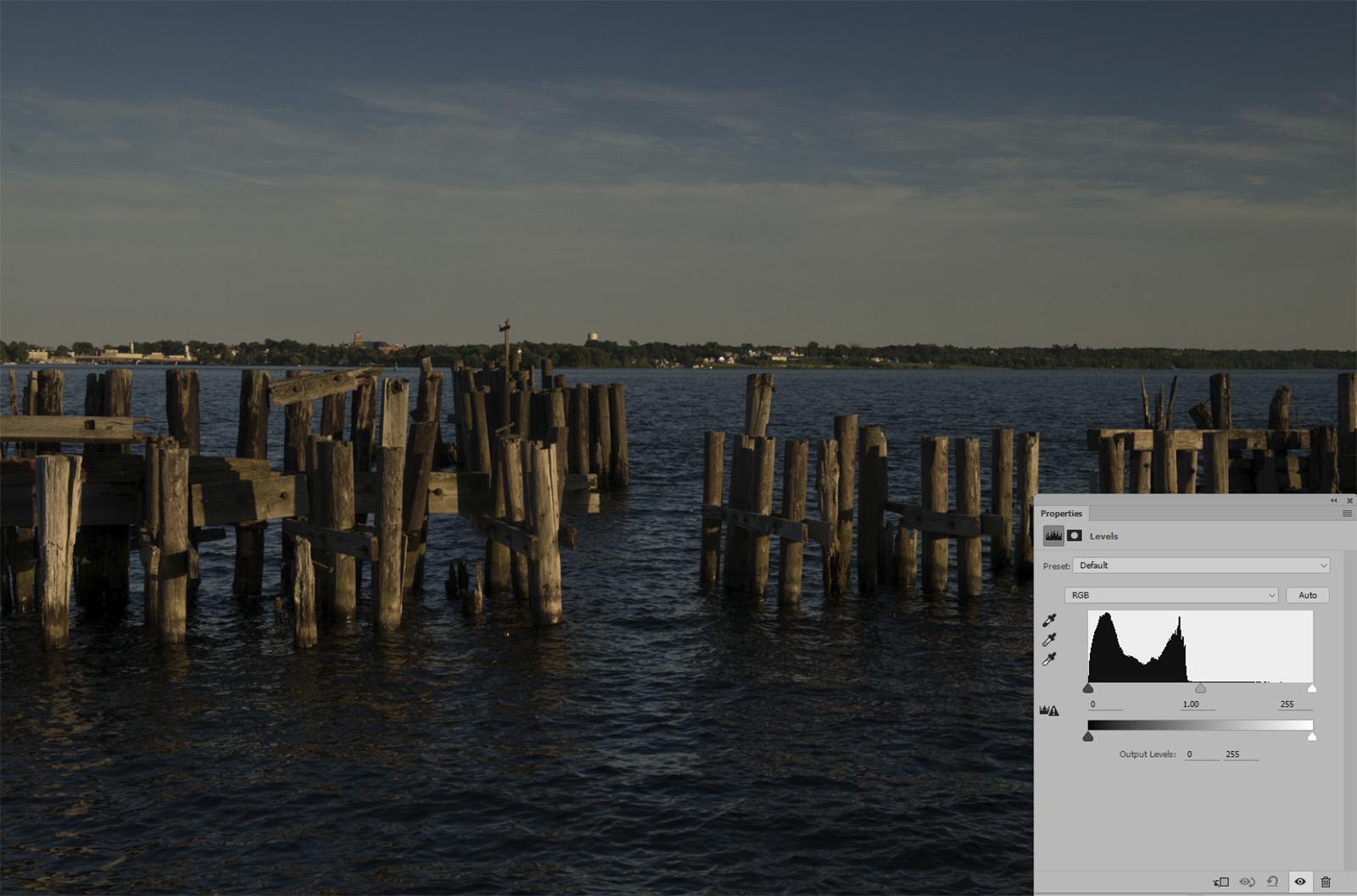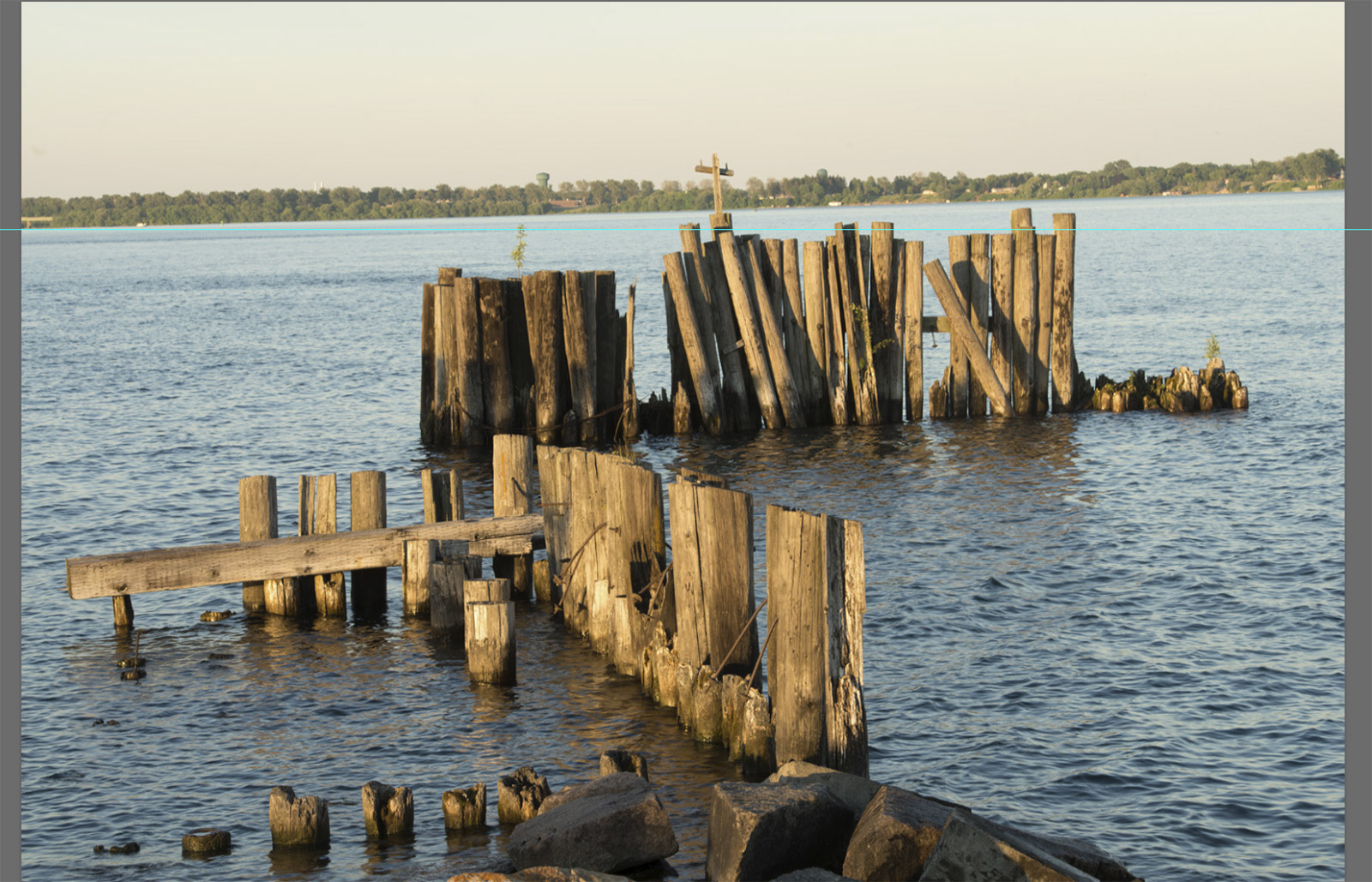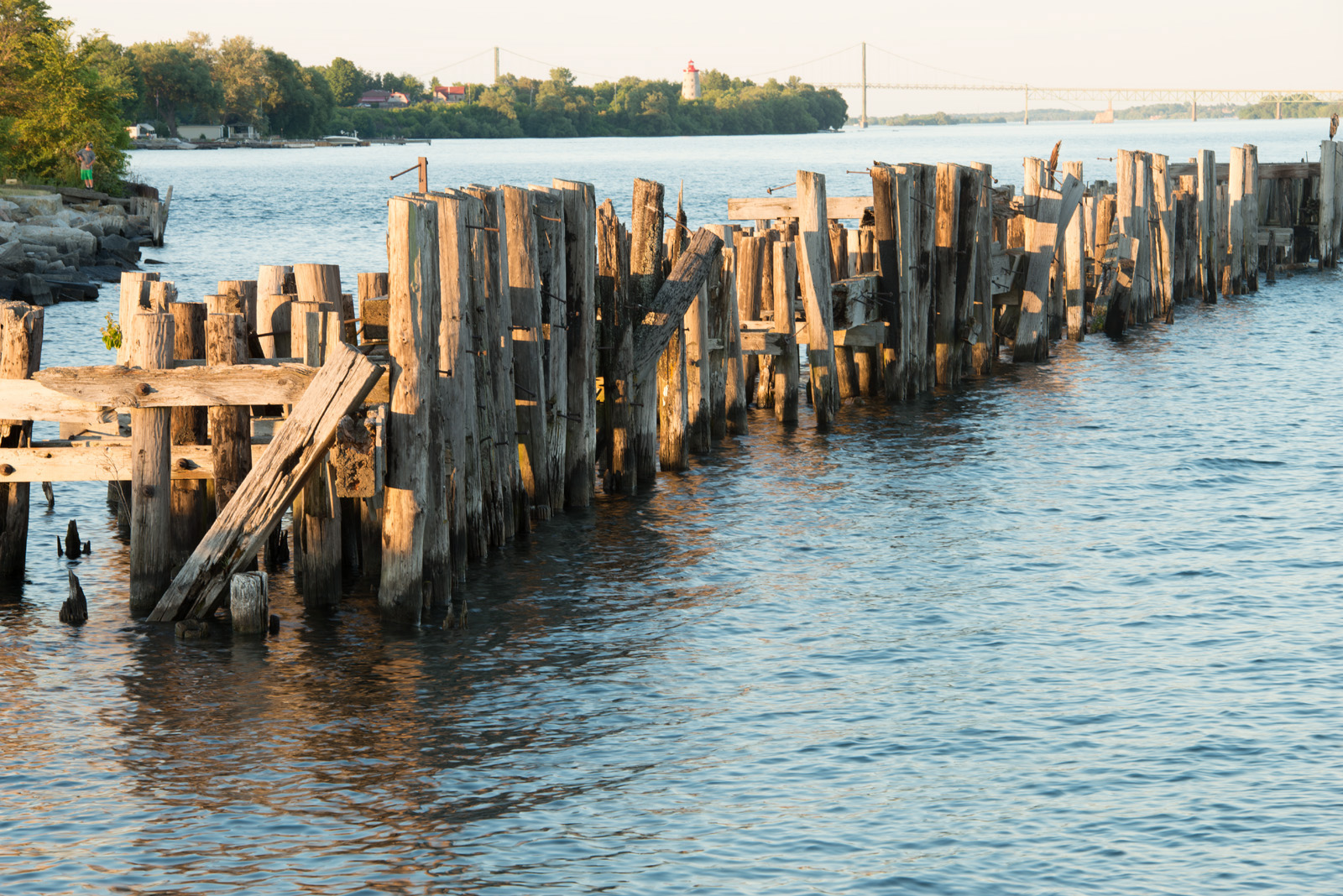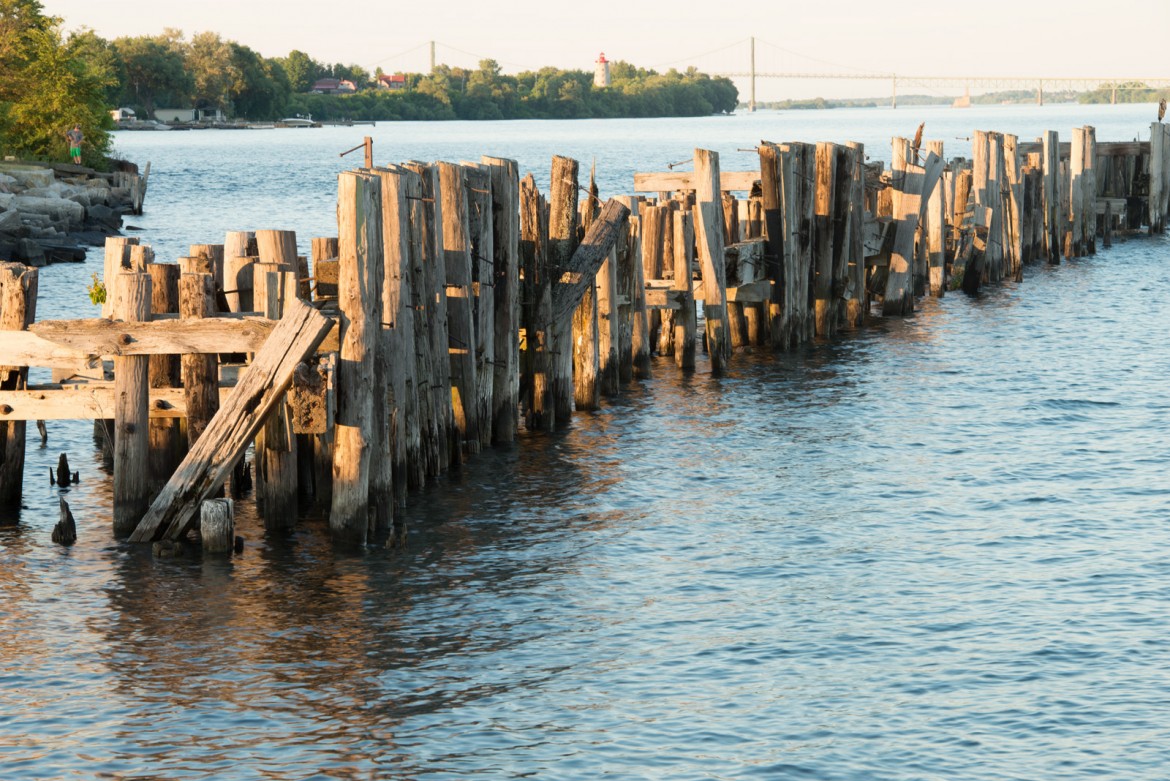One comment one hears quite often is “get it right in camera”, but what does that mean and why should we do this? With the power that tools like Photoshop and the amount of data in our raw data, why should we care?
What does getting it right in the camera include?
Let me start by explaining by giving you my view of what we mean by the term. When I try to get things right in camera, I think about:
1. Technical aspects – which include exposure, sharpness, depth of field being optimal. If you are shooting jpeg, add correct white balance to that list.

Fig 1 – This is not a good image as it is significantly underexposed (by 2-stops). As the black values have not been blown out, technically the image can be recovered. This is a screen capture including that of the histogram.
The main concern when recovering data from an underexposed image is that this often also increases the noise in the darker areas, and that will have to be dealt with separately in a noise reduction step.
2. Framing – This image has been framed to be level (if this is the intent), the borders of the frame are free from intruding and distracting elements and none of the subject matter in the image should be crowding the edge of the frame.

Fig 2 – The horizon line is NOT level. The horizontal cyan guideline from the screen capture shows where it should be to be level. Yes, it can be straightened in post-production, but in doing so some of the material will have to be trimmed during the straighten process. This can result in parts of the image disappearing off the edge of the image or getting so close to the edge that it has a negative impact on the composition.
3. Composition – All of the things that you want in your image should be there and arranged the way you want to present the final image. That includes any required negative space. Just as important, have you excluded things that should NOT be in the image, so much as possible.

Fig 3: The man in the green shorts is not part of the composition. If I had waited for a minute or so, he would have moved on. Now we have a choice of either leaving him in the image or using some of the post-processing tools to remove him from the image.
Why we want to “Get it Right in Camera”
The reason we want to get things right in the camera is to get a good, solid and technically good image for a base for all of the post-processing work we will be doing. It is much like the foundation of a building; it is difficult to build a structurally sound building on a weak foundation. The same goes for an image; a good out camera image give you a good solid starting ground to build the final image from, a poor one will likely cause a host of problems that need to be corrected to create an acceptable final image.
There is of course one other excellent reason to have a good image out of the camera is that it saves us time and effort in post production. I like nothing better that getting an image where all I have to do is a touch of sharpening, lock in the white balance and tweak the contrast.
On the other hand, if you have a poorly exposed image that need a lot of cleanup to correct framing and composition issues. You will be sitting in the digital darkroom for a long time trying to get that image to look good and all of these corrective steps can create additional issues that have to be handled as well.
All this assumes you have the post-processing skills to do make the required corrections. If you don’t, you might as well hit the delete key on your keyboard and move on to the next image.
Just as an aside, I find that every additional minute spent getting things right in camera saves you a good 10 minutes or more in post-production, trying to correct those issues you should have avoided in the first place. Other experienced photographers I have spoken with agree with this time estimate of the amount of extra work that is generated why you don’t get things right in camera.
One Final Thought
If the photographer is shooting jpegs and does not do any post-processing work at all, he or she has to “get it right in camera”. If you feel that no serious photographer would work that way, I’d suggest you check with any commercial photographer who does weddings, covers sports or does event photography. A great many of them do work this way and shoot only jpegs, because of the time constraints they are working under; they have not time to work in raw.
Learn to shoot like a good jpeg shooter and your image quality will improve.
Note on the images
These pictures were all taken in the town of Prescott, in Ontario, Canada. It sits on the St Lawrence River, which forms part of the border between the USA and Canada. The town across the river is Ogdensburg, NY, USA.
The pilings in the water are part of the old docks that belonged to the Canadian Pacific Railways where train cars of goods would be ferried across the river from the USA. The bridge in the background of the third image is the Ogdensburg – Prescott International Bridge, one of the border crossing points between the USA and Canada. The rail traffic was diverted to truck traffic after the bridge was built and the rail yards were closed down in the early 1970s.
All the shots were taken during the evening “Golden Hour”.
Post by Manfred Mueller
 Manfred got his first camera as a child and by the time he was in his late teens, he was being mentored by a commercial photographer, so he was quite familiar with handling cameras as well as developing and printing in both B&W and colour in the wet darkroom. He also have quite a few professional level college courses on photography and videography under his belt.
Manfred got his first camera as a child and by the time he was in his late teens, he was being mentored by a commercial photographer, so he was quite familiar with handling cameras as well as developing and printing in both B&W and colour in the wet darkroom. He also have quite a few professional level college courses on photography and videography under his belt.
With all that training and experience, one might think he was a career photographer, but he’s not. He’s strictly an amateur. From a career standpoint, he’s an engineer, so as one might imagine, he is extremely analytical and interested in the technical as well as the aesthetic sides of photography. He retired almost two years ago and have spent much of that time pursuing another one of his favourite activities, traveling around the world with his wife, photographing the people and places he sees along the way. He has been to well over 50 countries and have visited well known and sophisticated cities and some rather remote and primitive places on every continent except Antarctica.
When it comes to photography, he is interested in photographing most things, from formal studio work to shooting wildlife in some rather out of the way places. He is quite knowledgeable in the digital darkroom (He has been using Photoshop since 2003) and he is someone who still feels that the print is the ultimate output of an image, so he is an experienced digital printer as well.
And as you might have guessed, he is not Indian. He was born in Germany, but he lives in Ottawa, which is the capital city of Canada. In his own words, “It has the honour of being the second coldest capital city in the world (Ulan Bator in Mongolia is the coldest) and it is also one of the snowiest cities in Canada, receiving around 2.25 meters of snow every winter. I think you can guess at why I like traveling…”





Rajneesh Panwar
8 July
One of the finest article i have read. Very informative .
Anuj Kumar
8 July
Nice. It was a good read. 🙂
pooja rajput
8 July
nicely put sir…very informative